Supermicro SYS-510T-MR Block Diagram
Since this is the first server we are reviewing with the new Intel Xeon E-2300 series, here is the slide showing what the platform offers, and where some of the basic features reside between the CPU and PCH.
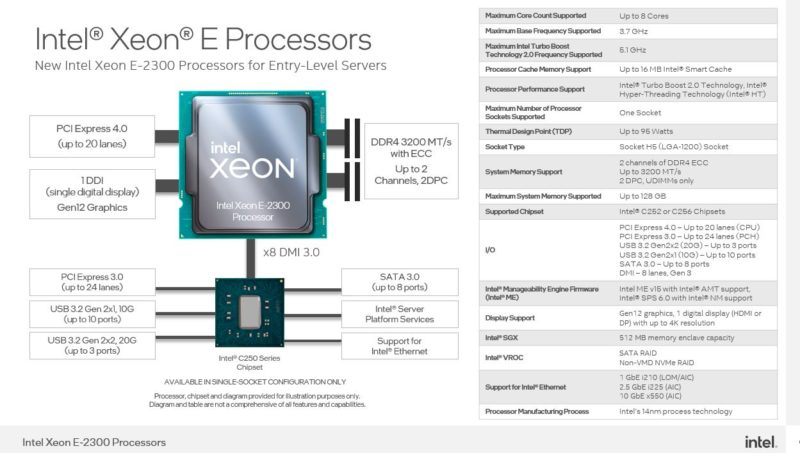
Given that, here is the best block diagram we could find for the system. This is actually the Supermicro X12STH general block diagram so there are some additional optional features such as the two extra i210’s and the extra PCIe Gen4 x4 slot that we noted in our internal hardware overview that is not populated in our system.
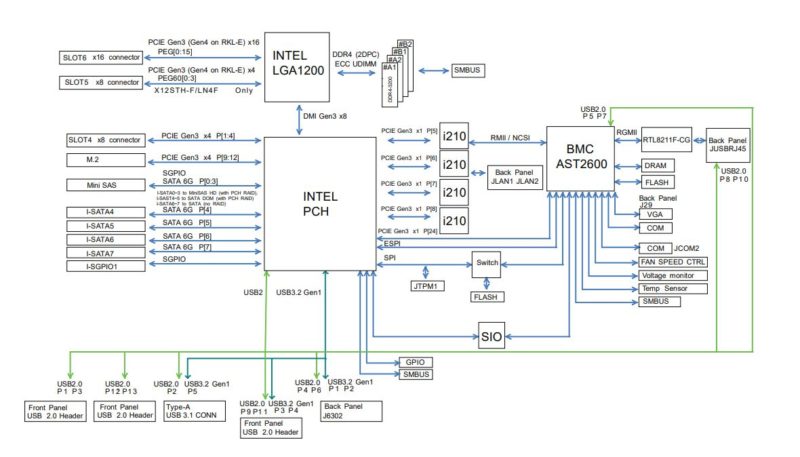
Still, perhaps the big key here is that the PCIe Gen4 x16 slot is the big new feature. Aside from that, and different from what we see on many higher-end servers, most of the other I/O sits off of the PCH instead of directly off of the CPU.
Supermicro SYS-510T-MR Management
Management is the new standard Supermicro IPMI solution. As you may have seen in the block diagram above, this generation now has the ASPEED AST2600 BMC. As a result, we get a faster processor which means we also get a refreshed management UI.

This is a refreshed IPMI solution that feels more modern starting with the company’s 12th generation (X12) products.
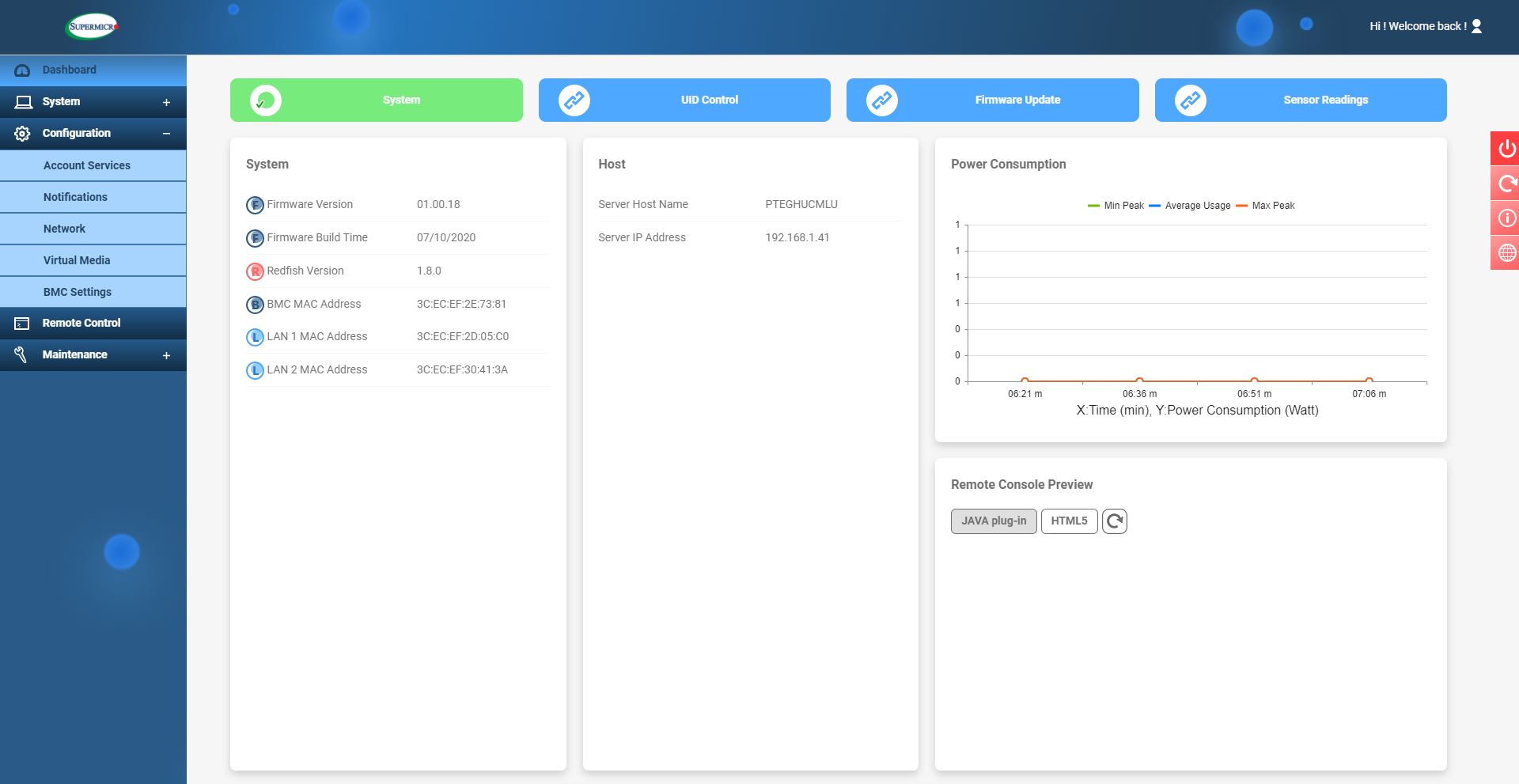
As a quick note, this system from Supermicro shipped with a BMC unique password feature enabled. In the future, these systems will have a unique password due to a California law mandating the practice. You can read more about that in Why Your Favorite Default Passwords Are Changing or see the video:
This password is both on the service tag as well as the IPMI network port. Some systems we have seen do not have the IPMI label on the service tag, so we like this option. We just wish that Supermicro made the text and label slightly larger.
Supermicro has a relatively strict password setup compared to many of its peers. If you have a letter-number-character combination that the firmware does not like, it will not let you change the password. If there is something else in the password the system does not like, it will not let you change the password. One feature that needs desperate attention is that there need to be password validation guidelines next to the “Add New User” dialog box. Otherwise, you get into a cycle where you are trying to add a password (that will work on systems from other vendors) and you will be told that the password does not meet requirements, but have no idea why. Given that the default ADMIN password is already randomized and unique by default, this is a challenging task to complete and is harder than on competitive vendor’s products. Supermicro’s firmware team needs to fix this, but luckily it is a firmware fix, not a hardware fix so it may change over time.

One can select features such as JAVA or HTML5 iKVM. The HTML5 iKVM we could not get virtual media running with. Hopefully, this is coming as other vendors have been a bit ahead of Supermicro in this area.

The old Java KVM still has remote media, and one can always just mount media from a network share which is usually faster. Still, we know our readers rely on this feature.
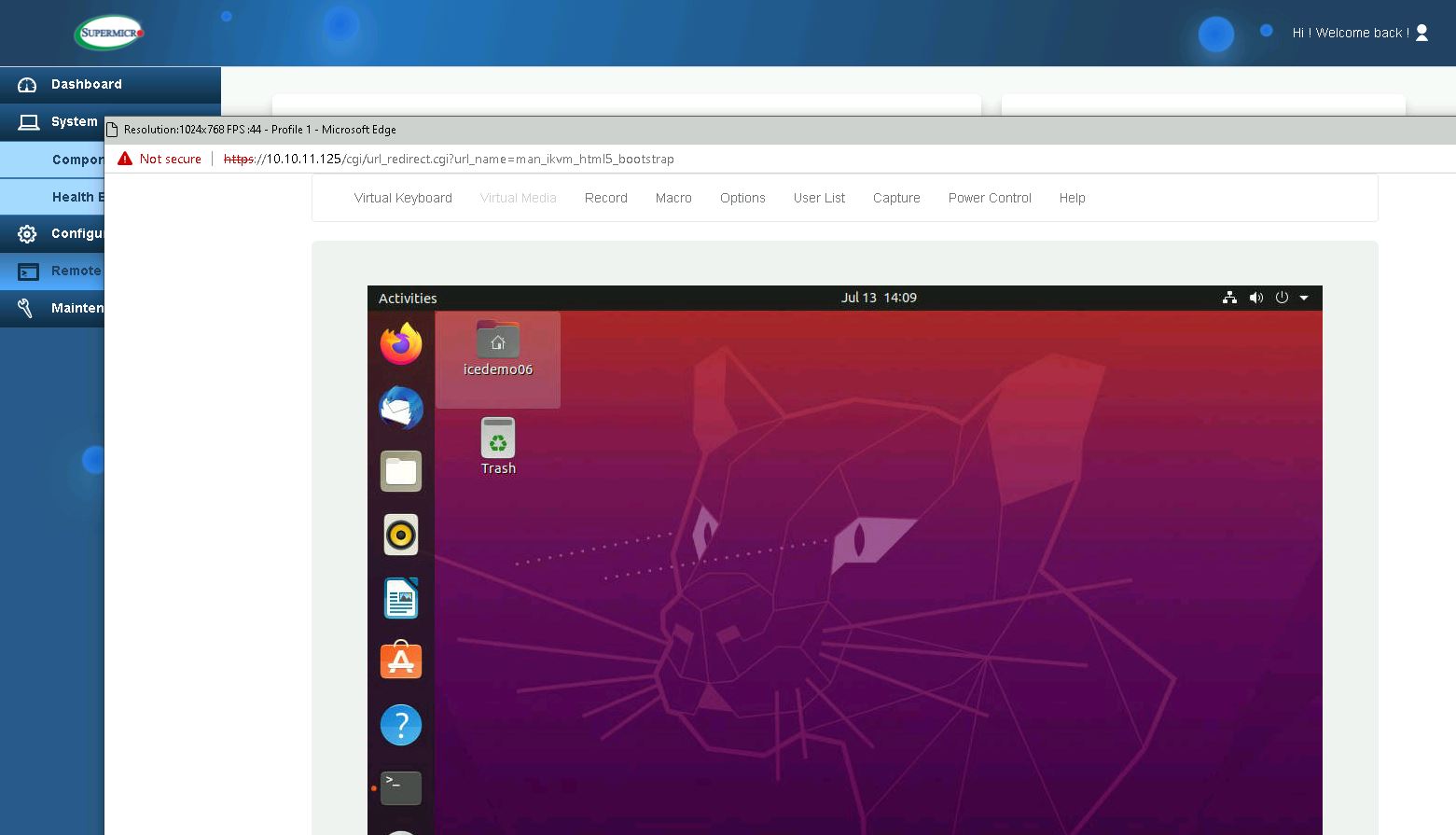
Overall, this is a huge feature for the server. Many competitive systems from Dell, HPE, and Lenovo charge extra for iKVM with remote media support so having this included is great.
Next, we are going to look at performance before getting to our performance, power consumption, STH Server Spider, and our final words.
Supermicro SYS-510T-MR Performance
In terms of performance, we are testing an upper-end SKU, and just wanted to do a quick comparison to the previous generation.

Although we have highlighted the PCIe Gen4 support as one of the major features, Rocket Lake-E is giving us a minor bump in performance over the previous generation. This is not going to redefine the segment in terms of performance since we still have an 8-core maximum in this generation. We also have only the performance cores in this generation. Intel has already discussed mixing Gracemont low power x86 cores and Golden Cove Performance x86 cores in its upcoming desktop Alder Lake product. The entry Xeon series typically lags the desktop series by several months. Realistically, in this segment there are some benefits as features like PCIe Gen5 and DDR5, rumored for Alder Lake, would be too expensive to practically use in this segment until the cost curves align better.
Next, let us get to power consumption, the STH Server Spider, and our final words.



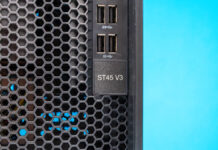
We saw an idle of around 33kW. With two 400w power supplies?
33w?
How much idle watts with 1 psu, 1 sata ssd, 2 dimms, no network, no pcie, no fans connected?